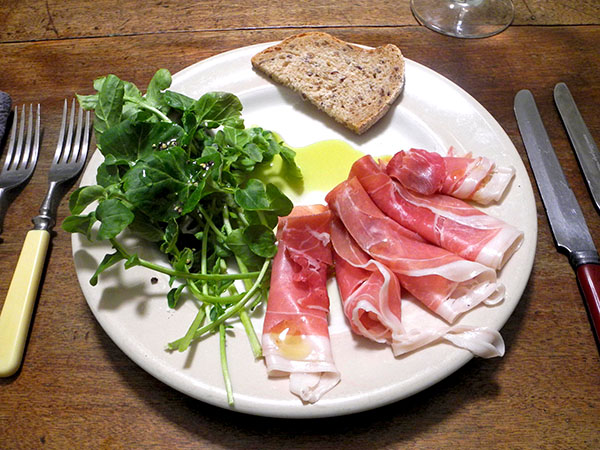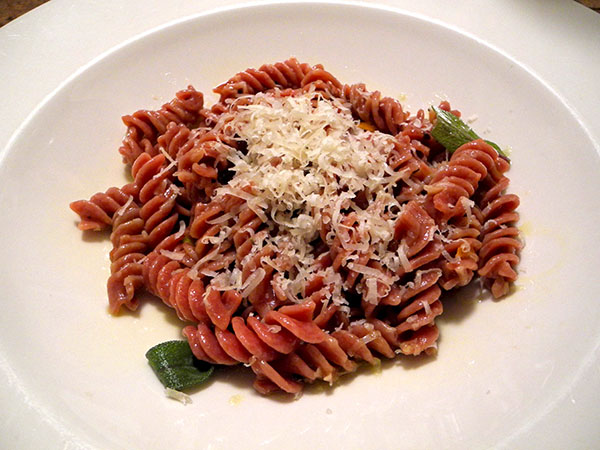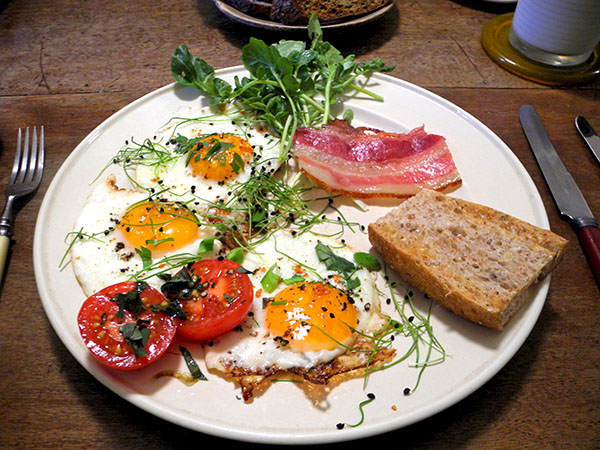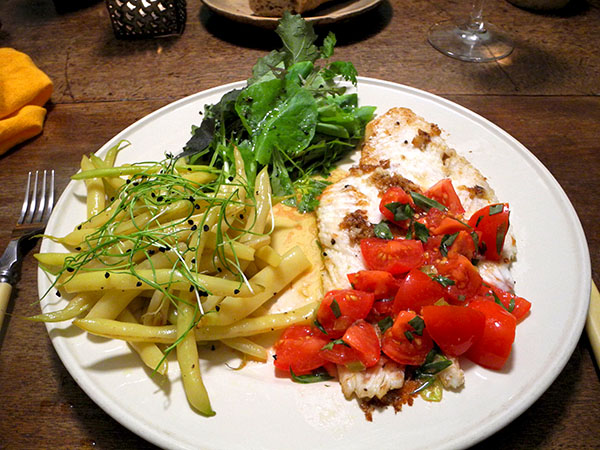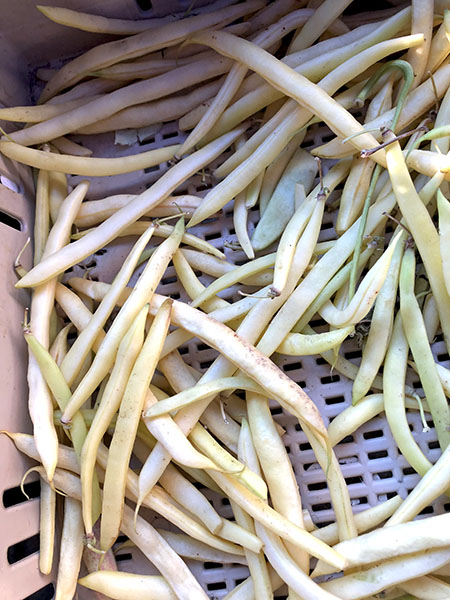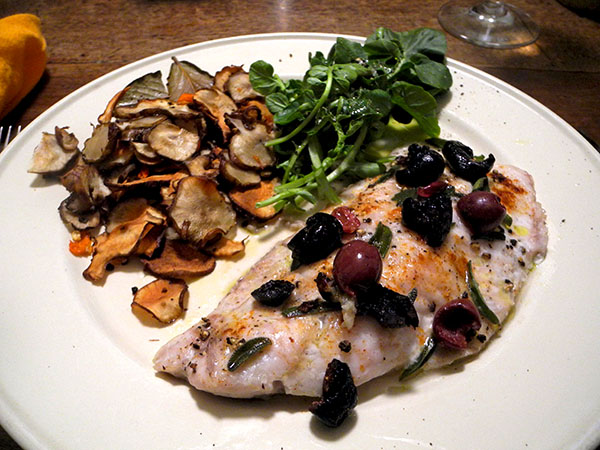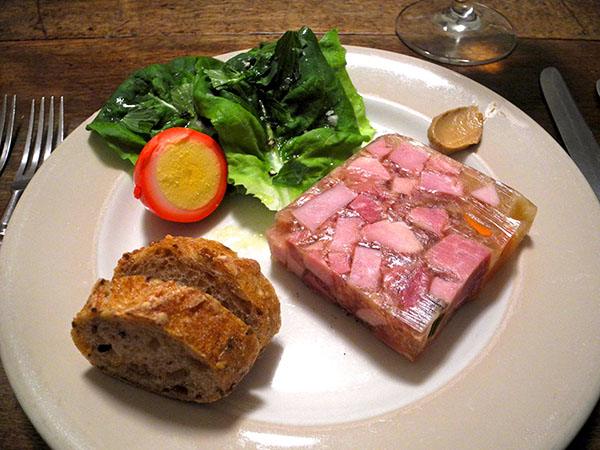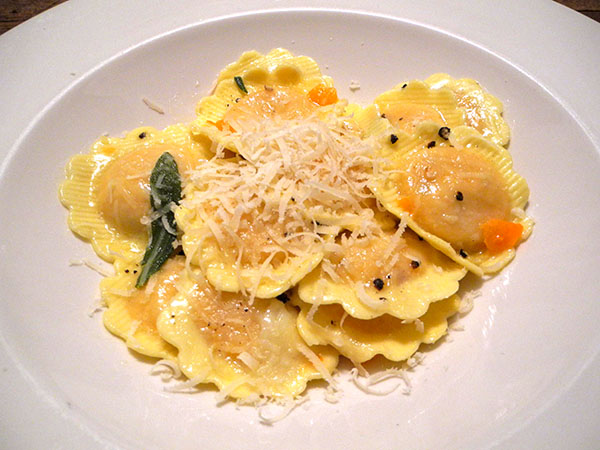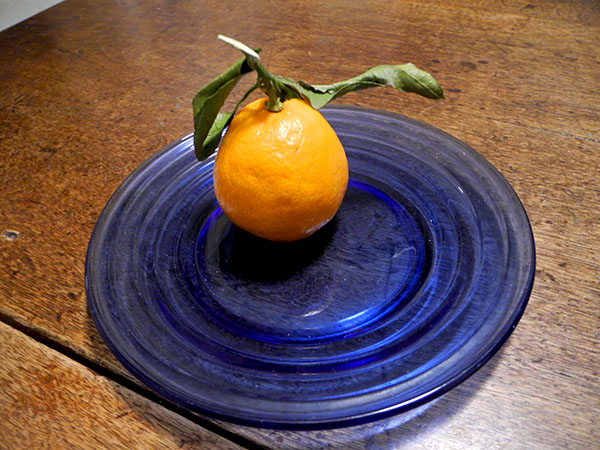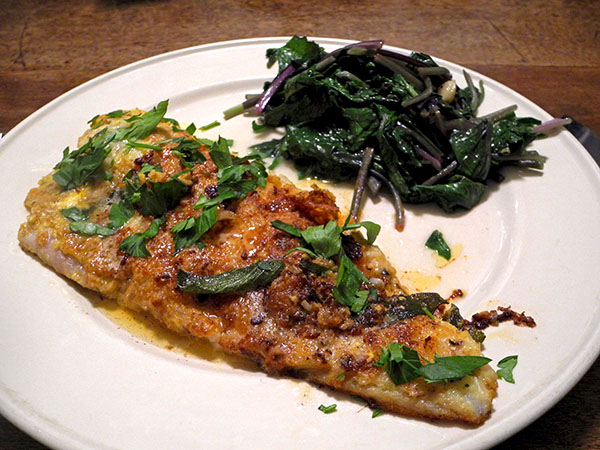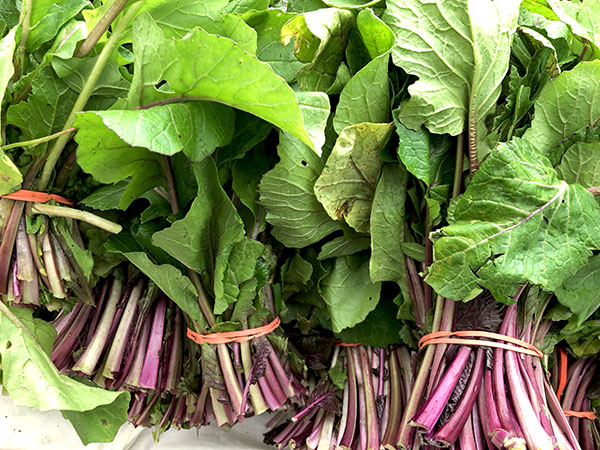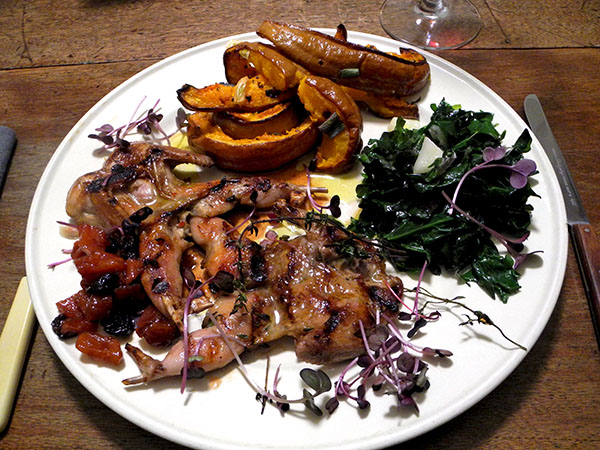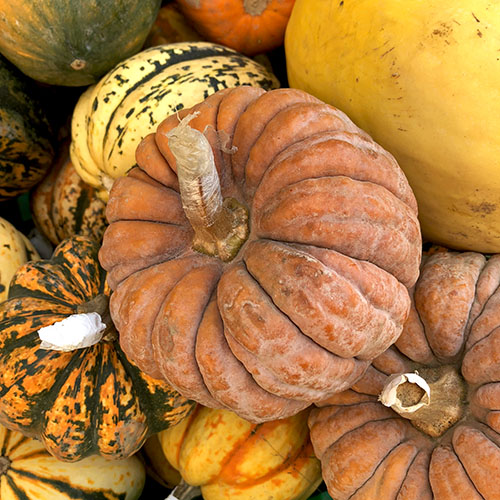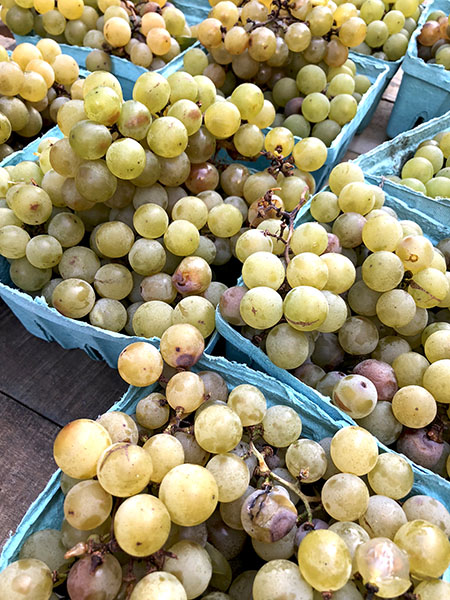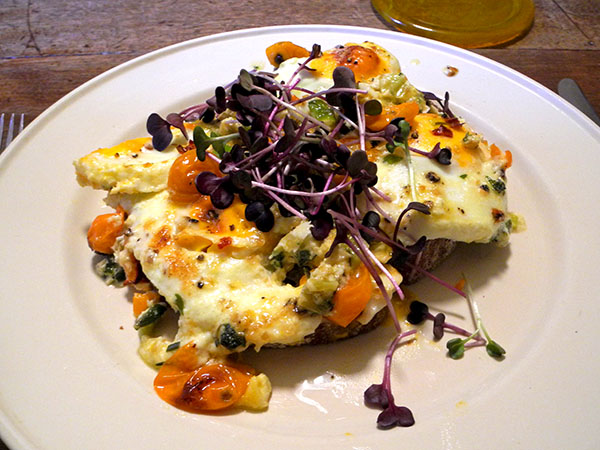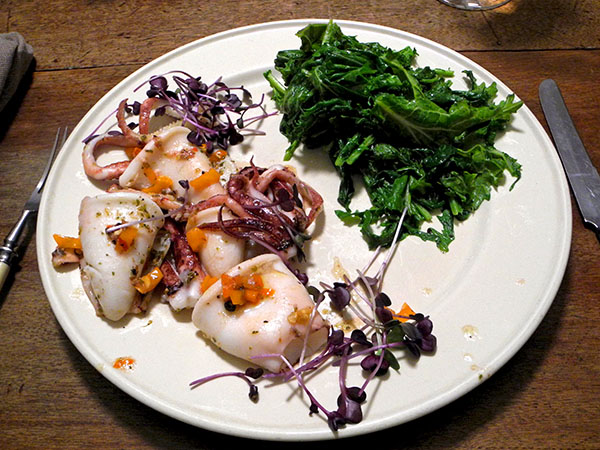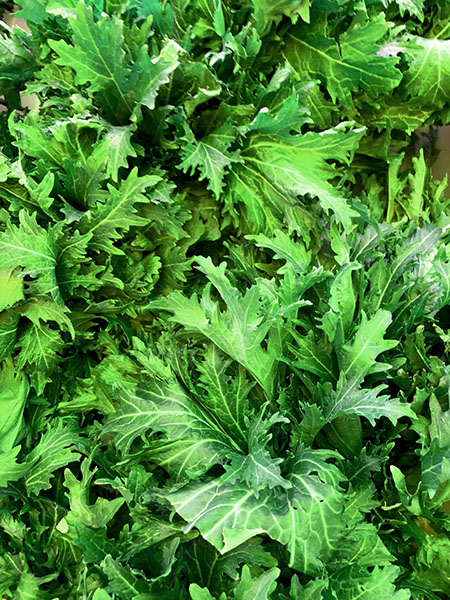
(the quince chutney hadn’t yet made it to the plate when I took this picture)
When was the last time anyone out there had mutton? Like most everyone in the English-speaking world, at least of my age or younger, I’ve only heard about mutton when it was being reviled as unfit for a proper meal.
I’ve been curious about the meat of mature sheep for decades, but i had never come across mutton until this past Friday when I saw a small sign on the Greenmarket table of a farmer with whose products I had only recently become acquainted (and with much satisfaction).
Over the years I had already learned something about what to expect. After a conversation at the stand, about the type of sheep the farm raises (‘hairy breeds‘), the differences between lamb and mutton generally (in this case it would not really be a very old sheep), and the description of good mutton as somewhat like game, I was really excited to try it for the first time. I bought 4 rib chops, which were roughly the size of most lamb chops, because the breed was smaller than sheep. It would be up to me to see that the experience was good.
It was very good, and I was able to bring it to the plate medium rare. Together with quince chutney, and some really good vegetables (all of which were also pretty much out of the ordinary), these mutton chops made a really excellent [*] meal. They were everything i expected, and more.
I’ll definitely be going back.
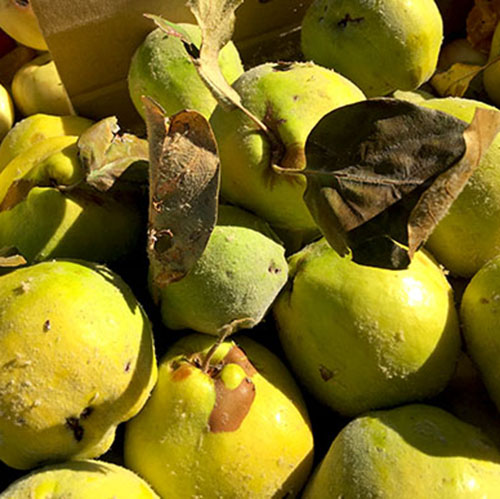

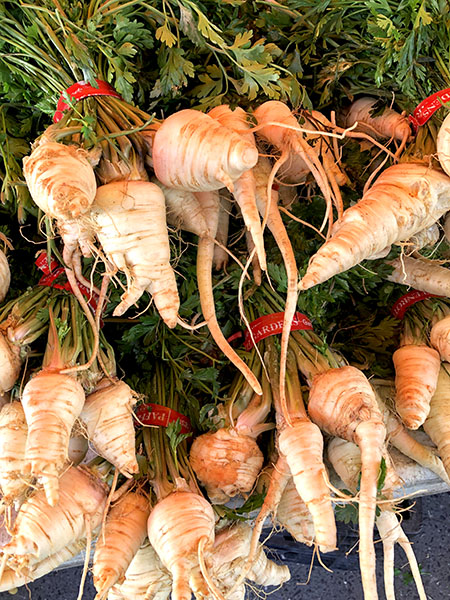
- * four 5-ounce mutton chops from Lowland Farm, in Warwick, New York, dried thoroughly, grilled on a very hot enameled cast iron ribbed pan for a total of 10 or 12 minutes, turning twice, seasoned with sea salt and freshly-ground black pepper after the first time, finished with a squeeze of juice from an organic lemon from Whole Foods Market, scattered with micro scallion from Two Guys from Woodbridge, and drizzled with a little olive oil
- * quince chutney remaining from an earlier meal, using this theKitchn.com recipe, incorporating a red shallot from Norwich Meadows Farm, a Rocambole garlic clove from Keith’s Farm, quince from Troncillito Farms, dried sweet cherries (don’t know whether they were local) from Whole Foods, fresh ginger from Lani’s Farm, and apple cider vinegar from Race Farm
- * two small heads of tardivo radicchio from Campo Rosso Farm, prepared pretty much according to this simple recipe, which is to say, washed under cold running water, the moisture shaken off, each head cut in half lengthwise, and a V-cut made inside the root end to allow it to cook more rapidly, the halves arranged inside a ceramic oven pan cut side up, covered with thyme sprigs from S. & S.O. Farm, seasoned generously with salt and pepper, drizzled with 2 tablespoons of olive oil, baked for about 12 minutes, turned over, baked for about 8 minutes more, turned so the cut side is up and once again returned to the oven, this time for only a couple minutes or so, or until the stems were tender [the tardivo can be served hot or warm]
- * less than a pound of small root parsley from Paffenroth Gardens, their beautiful greens cut off when they were first brought home (they can be enjoyed as a strong-flavored parsley, but I didn’t have occasion to do so this time), and 2 sunchokes from Max Creek Hatchery, all of the roots trimmed, scrubbed, and sliced into sections equivalent to small French fries (although their small size and their shapes made something of a mockery of my attempt this time), tossed inside a bowl with a little olive oil, a few pinches of sea salt, freshly-ground black pepper, one small fresh habanada pepper from Norwich Meadows Farm, chopped, and fresh whole rosemary leaves from S. & S.O. Farm, spread onto a large Pampered chef unglazed ceramic oven pan, roasted inside a 400º oven for 20 minutes, tossed, then returned to the oven for another 5 or 10 minutes until, ideally, golden on the edges, with crispy ends, but a tender center.
- * the wine was a California (Sonoma) red, ROX Scott Peterson Cabernet Sauvignon Sonoma 2015, from Naked Wines
- * the music was a wonderful performance of Haydn’s 1783 opera, ‘Armida’, with Jessye Norman, Claes H. Ahnsjö, Anthony Rolfe Johnson, Robin Leggate, and others,
Antal Doráti conducting the Lausanne Chamber Orchestra
